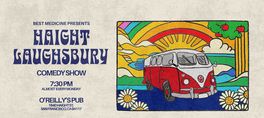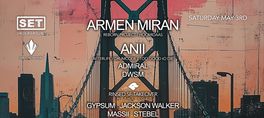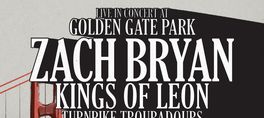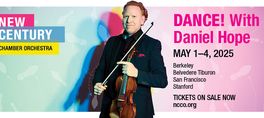Mon January 18, 2016
New Exhibition Celebrates Artists at Work
SEE EVENT DETAILS
at Cantor Arts Center
(see times)
The Cantor Arts Center presents a major new exhibition, Artists at Work, which examines how artists become inspired, how artists make objects and how place impacts artists’ work. This major exhibition of more than 70 works features a close examination of the museum’s expansive permanent collection and includes works by Édouard Manet, J. M. W. Turner, Thomas Hart Benton, Sol LeWitt, Richard Serra, Ansel Adams, Edward Weston and other renowned American and European artists. Also included are loaned works by contemporary artists Trevor Paglen, Garth Weiser, Hope Gangloff and Rachel Owens, among others.
The exhibition celebrates the opening of the McMurtry Building for Art and Art History, which is adjacent to the Cantor Arts Center. Designed by Diller, Scofidio + Renfro, this new departmental building allows for a stronger partnership between the museum and the Department of Art and Art History. The design of the building unites the two related but distinct populations of art history and art making. The architects envisioned a building comprising two strands that retain identities but embrace and interlock to create opportunities for exchange, promoting discourse and collaboration between the disciplines.
Artists at Work deeply blends the lessons of art history with the acts of art making. Unique to the museum, of course, is the possibility of learning through looking at significant objects from across history, alongside some of the best work being produced in our own moment. This exhibition considers the distinct way we come to understand the artistic condition through the works artists create. In bringing together works that create a cross-historical dialogue, the exhibition points to the ways looking at objects through the lens of history can also elucidate the ways artists have worked and continue to work to push against the myriad boundaries of social, political and art historical norms that often seem to circumscribe their practice. The exhibition asks, what does it take for an artist to make work, certainly, but more interestingly, what does it take for an artist to make work great?
The exhibition was inspired in large part by the museum’s major recent acquisitions of renowned Bay Area artist Richard Diebenkorn’s sketchbooks and early 20th-century painter Edward Hopper’s painting New York Corner—all of which will be on concurrent view at the museum. Alison Gass, the Cantor’s associate director for exhibitions, collections and curatorial affairs, commented, “Examining the pages of the Diebenkorn sketchbooks offers deep and revelatory insights into Diebenkorn’s practice. One begins to consider biggest-picture artistic questions, like why Diebenkorn made art, how he made it and where he made it. The sketchbooks really prompted us to look at our collection and compare other artists’ creative processes to Diebenkorn’s. And that thinking became the impetus for Artists at Work.”
In keeping with this model of using art objects to answer these basic yet essential questions about artistic practice, Artists at Work is structured in nodes organized around themes of process, inspiration and place. Each node juxtaposes works in unexpected pairings, pointing to the ways in which objects might truly inter-inform one another or offer new ways of thinking based on proximity and thematic connectedness. Each node includes a significant contemporary artwork on loan to the exhibition, pointing to the fact that the greatest art of today often roots itself in conversations and interests that artists have been dealing with for eras.
The exhibition begins with the theme of artistic process. In many ways, this is the most basic question. How do artists work? How important is the structure of art school and the different ways artists learn? How have these notions changed over time? What is the role of the “study” in artistic practice? As technological innovations happen, how does that impact art making? Process became a movement in and of itself in the middle of the 20th century, how did that change artistic practice?
For example, one can say that the Diebenkorn sketchbooks are intrinsically about the hand of the artist. In response to thinking about the role of the hand in artistic practice, the exhibition juxtaposes a 19th-century sculptural hand study by Auguste Rodin with recent hand sculptures by contemporary artist Rachel Owens—literal representations of the hand, certainly, but also a reference to the touch of the hand of an artist so celebrated in the history of art. Conversely, a grouping of objects that includes studies by Sol LeWitt along with a recent painting by artist Garth Weiser highlights artwork that seems to be about the removal of the artist’s hand in the process of making art. Here, the hand of the artist disappears as the work is structured via a series of guidelines and systems that result in rigid and linear abstractions.
The second major theme is inspiration. Artists often are thought of as tapping into a truly essential line of human creativity. From where do artists draw inspiration? Does it come from personal relationships like family, or professional relationships like artistic community? Art about art has been a deep tenet of Western art practice. This exhibition examines key moments of artistic influence and impetus. Inspiration is seemingly everywhere across the pages of the Diebenkorn sketchbooks. They offer myriad examples of how he used the figures of people around him and his relationships with them, repeatedly depicting representations of his wife, Phyllis, in mundane settings, as well as intimate and romantic settings, and as the subject of stylistically innovative drawings that set the stage for breakthrough paintings. Subsequently, the exhibition illuminates the ways in which artists such as Jean-Auguste-Dominique Ingres and Édouard Manet use the female form as a springboard for major artistic breakthroughs. Works by these artists are partnered with a major figurative painting by Hope Gangloff, a contemporary artist who limits her figurative practice to friends and family who inspire her large-scale portraits.
Place is almost always a relevant factor to consider in examining art objects. Over the course of Western art history, certain schools and styles have developed around regions. Oftentimes the cultural and political conditions of a particular place at a particular moment drive the course of artistic practice. How much does place impact artistic practice and why do artists continue to return to studies of place, whether urban environments or landscapes? As the art world becomes increasing global and regional styles are less circumscribed, how does this change practice?
The power of place is evident throughout Diebenkorn’s sketches of the Bay Area and his travel spots abroad, and looking at the sketchbooks is very much about considering what it meant to be a painter in the Bay Area in the second half of the 20th century. This is where Edward Hopper’s work becomes most overtly impactful as well. New York Corner was made in 1913 just after a return to New York from Paris. In that painting, elements of French modernism are evident in Hopper’s brushstroke even as he refines what will become his signature style of representing New York street scenes. In Artists at Work, thematic examinations of place shed light on the way a landscape may be politically and socially charged. Regionalist studies of the United States in the depression era by Thomas Hart Benton are partnered with recent, powerful photographs by Trevor Paglen that present the American landscape as a site of governmental spying in an era of potential violations of Americans’ privacy.
Gass said of Artists at Work, “This exhibition is certainly about the impact a major gift can have on the various stories one can tell with a museum collection, but it is also about charting a course for considering the evolution of a collection. My curatorial background is in contemporary art, but I am deeply interested in the way contemporary art roots itself in history. Bringing in loans to extend the cross-historical dialogues into very recent artistic practice is a means of pointing to the ways in which artists and art objects might constantly inter-inform one another.”
show less
The exhibition celebrates the opening of the McMurtry Building for Art and Art History, which is adjacent to the Cantor Arts Center. Designed by Diller, Scofidio + Renfro, this new departmental building allows for a stronger partnership between the museum and the Department of Art and Art History. The design of the building unites the two related but distinct populations of art history and art making. The architects envisioned a building comprising two strands that retain identities but embrace and interlock to create opportunities for exchange, promoting discourse and collaboration between the disciplines.
Artists at Work deeply blends the lessons of art history with the acts of art making. Unique to the museum, of course, is the possibility of learning through looking at significant objects from across history, alongside some of the best work being produced in our own moment. This exhibition considers the distinct way we come to understand the artistic condition through the works artists create. In bringing together works that create a cross-historical dialogue, the exhibition points to the ways looking at objects through the lens of history can also elucidate the ways artists have worked and continue to work to push against the myriad boundaries of social, political and art historical norms that often seem to circumscribe their practice. The exhibition asks, what does it take for an artist to make work, certainly, but more interestingly, what does it take for an artist to make work great?
The exhibition was inspired in large part by the museum’s major recent acquisitions of renowned Bay Area artist Richard Diebenkorn’s sketchbooks and early 20th-century painter Edward Hopper’s painting New York Corner—all of which will be on concurrent view at the museum. Alison Gass, the Cantor’s associate director for exhibitions, collections and curatorial affairs, commented, “Examining the pages of the Diebenkorn sketchbooks offers deep and revelatory insights into Diebenkorn’s practice. One begins to consider biggest-picture artistic questions, like why Diebenkorn made art, how he made it and where he made it. The sketchbooks really prompted us to look at our collection and compare other artists’ creative processes to Diebenkorn’s. And that thinking became the impetus for Artists at Work.”
In keeping with this model of using art objects to answer these basic yet essential questions about artistic practice, Artists at Work is structured in nodes organized around themes of process, inspiration and place. Each node juxtaposes works in unexpected pairings, pointing to the ways in which objects might truly inter-inform one another or offer new ways of thinking based on proximity and thematic connectedness. Each node includes a significant contemporary artwork on loan to the exhibition, pointing to the fact that the greatest art of today often roots itself in conversations and interests that artists have been dealing with for eras.
The exhibition begins with the theme of artistic process. In many ways, this is the most basic question. How do artists work? How important is the structure of art school and the different ways artists learn? How have these notions changed over time? What is the role of the “study” in artistic practice? As technological innovations happen, how does that impact art making? Process became a movement in and of itself in the middle of the 20th century, how did that change artistic practice?
For example, one can say that the Diebenkorn sketchbooks are intrinsically about the hand of the artist. In response to thinking about the role of the hand in artistic practice, the exhibition juxtaposes a 19th-century sculptural hand study by Auguste Rodin with recent hand sculptures by contemporary artist Rachel Owens—literal representations of the hand, certainly, but also a reference to the touch of the hand of an artist so celebrated in the history of art. Conversely, a grouping of objects that includes studies by Sol LeWitt along with a recent painting by artist Garth Weiser highlights artwork that seems to be about the removal of the artist’s hand in the process of making art. Here, the hand of the artist disappears as the work is structured via a series of guidelines and systems that result in rigid and linear abstractions.
The second major theme is inspiration. Artists often are thought of as tapping into a truly essential line of human creativity. From where do artists draw inspiration? Does it come from personal relationships like family, or professional relationships like artistic community? Art about art has been a deep tenet of Western art practice. This exhibition examines key moments of artistic influence and impetus. Inspiration is seemingly everywhere across the pages of the Diebenkorn sketchbooks. They offer myriad examples of how he used the figures of people around him and his relationships with them, repeatedly depicting representations of his wife, Phyllis, in mundane settings, as well as intimate and romantic settings, and as the subject of stylistically innovative drawings that set the stage for breakthrough paintings. Subsequently, the exhibition illuminates the ways in which artists such as Jean-Auguste-Dominique Ingres and Édouard Manet use the female form as a springboard for major artistic breakthroughs. Works by these artists are partnered with a major figurative painting by Hope Gangloff, a contemporary artist who limits her figurative practice to friends and family who inspire her large-scale portraits.
Place is almost always a relevant factor to consider in examining art objects. Over the course of Western art history, certain schools and styles have developed around regions. Oftentimes the cultural and political conditions of a particular place at a particular moment drive the course of artistic practice. How much does place impact artistic practice and why do artists continue to return to studies of place, whether urban environments or landscapes? As the art world becomes increasing global and regional styles are less circumscribed, how does this change practice?
The power of place is evident throughout Diebenkorn’s sketches of the Bay Area and his travel spots abroad, and looking at the sketchbooks is very much about considering what it meant to be a painter in the Bay Area in the second half of the 20th century. This is where Edward Hopper’s work becomes most overtly impactful as well. New York Corner was made in 1913 just after a return to New York from Paris. In that painting, elements of French modernism are evident in Hopper’s brushstroke even as he refines what will become his signature style of representing New York street scenes. In Artists at Work, thematic examinations of place shed light on the way a landscape may be politically and socially charged. Regionalist studies of the United States in the depression era by Thomas Hart Benton are partnered with recent, powerful photographs by Trevor Paglen that present the American landscape as a site of governmental spying in an era of potential violations of Americans’ privacy.
Gass said of Artists at Work, “This exhibition is certainly about the impact a major gift can have on the various stories one can tell with a museum collection, but it is also about charting a course for considering the evolution of a collection. My curatorial background is in contemporary art, but I am deeply interested in the way contemporary art roots itself in history. Bringing in loans to extend the cross-historical dialogues into very recent artistic practice is a means of pointing to the ways in which artists and art objects might constantly inter-inform one another.”
The Cantor Arts Center presents a major new exhibition, Artists at Work, which examines how artists become inspired, how artists make objects and how place impacts artists’ work. This major exhibition of more than 70 works features a close examination of the museum’s expansive permanent collection and includes works by Édouard Manet, J. M. W. Turner, Thomas Hart Benton, Sol LeWitt, Richard Serra, Ansel Adams, Edward Weston and other renowned American and European artists. Also included are loaned works by contemporary artists Trevor Paglen, Garth Weiser, Hope Gangloff and Rachel Owens, among others.
The exhibition celebrates the opening of the McMurtry Building for Art and Art History, which is adjacent to the Cantor Arts Center. Designed by Diller, Scofidio + Renfro, this new departmental building allows for a stronger partnership between the museum and the Department of Art and Art History. The design of the building unites the two related but distinct populations of art history and art making. The architects envisioned a building comprising two strands that retain identities but embrace and interlock to create opportunities for exchange, promoting discourse and collaboration between the disciplines.
Artists at Work deeply blends the lessons of art history with the acts of art making. Unique to the museum, of course, is the possibility of learning through looking at significant objects from across history, alongside some of the best work being produced in our own moment. This exhibition considers the distinct way we come to understand the artistic condition through the works artists create. In bringing together works that create a cross-historical dialogue, the exhibition points to the ways looking at objects through the lens of history can also elucidate the ways artists have worked and continue to work to push against the myriad boundaries of social, political and art historical norms that often seem to circumscribe their practice. The exhibition asks, what does it take for an artist to make work, certainly, but more interestingly, what does it take for an artist to make work great?
The exhibition was inspired in large part by the museum’s major recent acquisitions of renowned Bay Area artist Richard Diebenkorn’s sketchbooks and early 20th-century painter Edward Hopper’s painting New York Corner—all of which will be on concurrent view at the museum. Alison Gass, the Cantor’s associate director for exhibitions, collections and curatorial affairs, commented, “Examining the pages of the Diebenkorn sketchbooks offers deep and revelatory insights into Diebenkorn’s practice. One begins to consider biggest-picture artistic questions, like why Diebenkorn made art, how he made it and where he made it. The sketchbooks really prompted us to look at our collection and compare other artists’ creative processes to Diebenkorn’s. And that thinking became the impetus for Artists at Work.”
In keeping with this model of using art objects to answer these basic yet essential questions about artistic practice, Artists at Work is structured in nodes organized around themes of process, inspiration and place. Each node juxtaposes works in unexpected pairings, pointing to the ways in which objects might truly inter-inform one another or offer new ways of thinking based on proximity and thematic connectedness. Each node includes a significant contemporary artwork on loan to the exhibition, pointing to the fact that the greatest art of today often roots itself in conversations and interests that artists have been dealing with for eras.
The exhibition begins with the theme of artistic process. In many ways, this is the most basic question. How do artists work? How important is the structure of art school and the different ways artists learn? How have these notions changed over time? What is the role of the “study” in artistic practice? As technological innovations happen, how does that impact art making? Process became a movement in and of itself in the middle of the 20th century, how did that change artistic practice?
For example, one can say that the Diebenkorn sketchbooks are intrinsically about the hand of the artist. In response to thinking about the role of the hand in artistic practice, the exhibition juxtaposes a 19th-century sculptural hand study by Auguste Rodin with recent hand sculptures by contemporary artist Rachel Owens—literal representations of the hand, certainly, but also a reference to the touch of the hand of an artist so celebrated in the history of art. Conversely, a grouping of objects that includes studies by Sol LeWitt along with a recent painting by artist Garth Weiser highlights artwork that seems to be about the removal of the artist’s hand in the process of making art. Here, the hand of the artist disappears as the work is structured via a series of guidelines and systems that result in rigid and linear abstractions.
The second major theme is inspiration. Artists often are thought of as tapping into a truly essential line of human creativity. From where do artists draw inspiration? Does it come from personal relationships like family, or professional relationships like artistic community? Art about art has been a deep tenet of Western art practice. This exhibition examines key moments of artistic influence and impetus. Inspiration is seemingly everywhere across the pages of the Diebenkorn sketchbooks. They offer myriad examples of how he used the figures of people around him and his relationships with them, repeatedly depicting representations of his wife, Phyllis, in mundane settings, as well as intimate and romantic settings, and as the subject of stylistically innovative drawings that set the stage for breakthrough paintings. Subsequently, the exhibition illuminates the ways in which artists such as Jean-Auguste-Dominique Ingres and Édouard Manet use the female form as a springboard for major artistic breakthroughs. Works by these artists are partnered with a major figurative painting by Hope Gangloff, a contemporary artist who limits her figurative practice to friends and family who inspire her large-scale portraits.
Place is almost always a relevant factor to consider in examining art objects. Over the course of Western art history, certain schools and styles have developed around regions. Oftentimes the cultural and political conditions of a particular place at a particular moment drive the course of artistic practice. How much does place impact artistic practice and why do artists continue to return to studies of place, whether urban environments or landscapes? As the art world becomes increasing global and regional styles are less circumscribed, how does this change practice?
The power of place is evident throughout Diebenkorn’s sketches of the Bay Area and his travel spots abroad, and looking at the sketchbooks is very much about considering what it meant to be a painter in the Bay Area in the second half of the 20th century. This is where Edward Hopper’s work becomes most overtly impactful as well. New York Corner was made in 1913 just after a return to New York from Paris. In that painting, elements of French modernism are evident in Hopper’s brushstroke even as he refines what will become his signature style of representing New York street scenes. In Artists at Work, thematic examinations of place shed light on the way a landscape may be politically and socially charged. Regionalist studies of the United States in the depression era by Thomas Hart Benton are partnered with recent, powerful photographs by Trevor Paglen that present the American landscape as a site of governmental spying in an era of potential violations of Americans’ privacy.
Gass said of Artists at Work, “This exhibition is certainly about the impact a major gift can have on the various stories one can tell with a museum collection, but it is also about charting a course for considering the evolution of a collection. My curatorial background is in contemporary art, but I am deeply interested in the way contemporary art roots itself in history. Bringing in loans to extend the cross-historical dialogues into very recent artistic practice is a means of pointing to the ways in which artists and art objects might constantly inter-inform one another.”
read more
The exhibition celebrates the opening of the McMurtry Building for Art and Art History, which is adjacent to the Cantor Arts Center. Designed by Diller, Scofidio + Renfro, this new departmental building allows for a stronger partnership between the museum and the Department of Art and Art History. The design of the building unites the two related but distinct populations of art history and art making. The architects envisioned a building comprising two strands that retain identities but embrace and interlock to create opportunities for exchange, promoting discourse and collaboration between the disciplines.
Artists at Work deeply blends the lessons of art history with the acts of art making. Unique to the museum, of course, is the possibility of learning through looking at significant objects from across history, alongside some of the best work being produced in our own moment. This exhibition considers the distinct way we come to understand the artistic condition through the works artists create. In bringing together works that create a cross-historical dialogue, the exhibition points to the ways looking at objects through the lens of history can also elucidate the ways artists have worked and continue to work to push against the myriad boundaries of social, political and art historical norms that often seem to circumscribe their practice. The exhibition asks, what does it take for an artist to make work, certainly, but more interestingly, what does it take for an artist to make work great?
The exhibition was inspired in large part by the museum’s major recent acquisitions of renowned Bay Area artist Richard Diebenkorn’s sketchbooks and early 20th-century painter Edward Hopper’s painting New York Corner—all of which will be on concurrent view at the museum. Alison Gass, the Cantor’s associate director for exhibitions, collections and curatorial affairs, commented, “Examining the pages of the Diebenkorn sketchbooks offers deep and revelatory insights into Diebenkorn’s practice. One begins to consider biggest-picture artistic questions, like why Diebenkorn made art, how he made it and where he made it. The sketchbooks really prompted us to look at our collection and compare other artists’ creative processes to Diebenkorn’s. And that thinking became the impetus for Artists at Work.”
In keeping with this model of using art objects to answer these basic yet essential questions about artistic practice, Artists at Work is structured in nodes organized around themes of process, inspiration and place. Each node juxtaposes works in unexpected pairings, pointing to the ways in which objects might truly inter-inform one another or offer new ways of thinking based on proximity and thematic connectedness. Each node includes a significant contemporary artwork on loan to the exhibition, pointing to the fact that the greatest art of today often roots itself in conversations and interests that artists have been dealing with for eras.
The exhibition begins with the theme of artistic process. In many ways, this is the most basic question. How do artists work? How important is the structure of art school and the different ways artists learn? How have these notions changed over time? What is the role of the “study” in artistic practice? As technological innovations happen, how does that impact art making? Process became a movement in and of itself in the middle of the 20th century, how did that change artistic practice?
For example, one can say that the Diebenkorn sketchbooks are intrinsically about the hand of the artist. In response to thinking about the role of the hand in artistic practice, the exhibition juxtaposes a 19th-century sculptural hand study by Auguste Rodin with recent hand sculptures by contemporary artist Rachel Owens—literal representations of the hand, certainly, but also a reference to the touch of the hand of an artist so celebrated in the history of art. Conversely, a grouping of objects that includes studies by Sol LeWitt along with a recent painting by artist Garth Weiser highlights artwork that seems to be about the removal of the artist’s hand in the process of making art. Here, the hand of the artist disappears as the work is structured via a series of guidelines and systems that result in rigid and linear abstractions.
The second major theme is inspiration. Artists often are thought of as tapping into a truly essential line of human creativity. From where do artists draw inspiration? Does it come from personal relationships like family, or professional relationships like artistic community? Art about art has been a deep tenet of Western art practice. This exhibition examines key moments of artistic influence and impetus. Inspiration is seemingly everywhere across the pages of the Diebenkorn sketchbooks. They offer myriad examples of how he used the figures of people around him and his relationships with them, repeatedly depicting representations of his wife, Phyllis, in mundane settings, as well as intimate and romantic settings, and as the subject of stylistically innovative drawings that set the stage for breakthrough paintings. Subsequently, the exhibition illuminates the ways in which artists such as Jean-Auguste-Dominique Ingres and Édouard Manet use the female form as a springboard for major artistic breakthroughs. Works by these artists are partnered with a major figurative painting by Hope Gangloff, a contemporary artist who limits her figurative practice to friends and family who inspire her large-scale portraits.
Place is almost always a relevant factor to consider in examining art objects. Over the course of Western art history, certain schools and styles have developed around regions. Oftentimes the cultural and political conditions of a particular place at a particular moment drive the course of artistic practice. How much does place impact artistic practice and why do artists continue to return to studies of place, whether urban environments or landscapes? As the art world becomes increasing global and regional styles are less circumscribed, how does this change practice?
The power of place is evident throughout Diebenkorn’s sketches of the Bay Area and his travel spots abroad, and looking at the sketchbooks is very much about considering what it meant to be a painter in the Bay Area in the second half of the 20th century. This is where Edward Hopper’s work becomes most overtly impactful as well. New York Corner was made in 1913 just after a return to New York from Paris. In that painting, elements of French modernism are evident in Hopper’s brushstroke even as he refines what will become his signature style of representing New York street scenes. In Artists at Work, thematic examinations of place shed light on the way a landscape may be politically and socially charged. Regionalist studies of the United States in the depression era by Thomas Hart Benton are partnered with recent, powerful photographs by Trevor Paglen that present the American landscape as a site of governmental spying in an era of potential violations of Americans’ privacy.
Gass said of Artists at Work, “This exhibition is certainly about the impact a major gift can have on the various stories one can tell with a museum collection, but it is also about charting a course for considering the evolution of a collection. My curatorial background is in contemporary art, but I am deeply interested in the way contemporary art roots itself in history. Bringing in loans to extend the cross-historical dialogues into very recent artistic practice is a means of pointing to the ways in which artists and art objects might constantly inter-inform one another.”
show less
Date/Times:
Cantor Arts Center
328 Lomita Dr, Palo Alto, CA 94305
The Best Events
Every Week in Your Inbox
From Our Sponsors
UPCOMING EVENTS
Great suggestion! We'll be in touch.
Event reviewed successfully.







